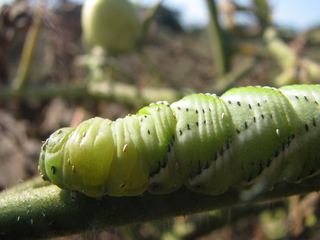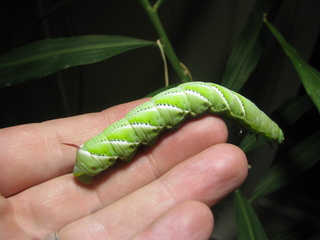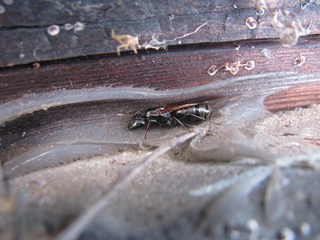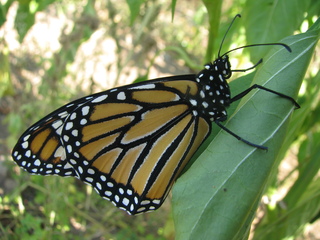Diary 2022-08-02
Aug. 1st, 2022 11:10 pmLast week I was surprised and delighted to see a mockingbird beating the absolute tar out of what I think was a Manduca caterpillar. I don't bear any ill-will towards Manduca, mind you; it was just so unexpected. I didn't know anything ate those! The bird must have plucked it out of someone's home garden on that block.
I was also able to locate the nest -- very loud cheeping in a nearby tree. :-)
----
A neighbor was giving out some ham from Walden Local Meats, a Massachusetts meat-share program with good standards. (So this is from pasture-raised pigs.) It's "uncured ham", which apparently actually means "cured, but with less gross ingredients". I accepted, and now we have to figure out what to do with it. Ham has not been much a part of my life. It's too fatty for me to enjoy directly on a sandwich, but I fried up some thin slices and I guess that's basically the same thing as bacon. Amazingly tasty. The fat mostly comes out into the skillet, so we can fry up other stuff in that instead of using olive oil.
These days I also make "tempeh cutlets" pretty often -- slice two packages of it thin, then marinate in 2 Tbsp soy sauce, 1 Tbsp balsamic vinegar, and 20 drops liquid smoke until absorbed. Pan fry in copious olive and toasted sesame oil. Pretty incredible in sandwiches, especially with burger/hot dog condiments and sometimes cheese.
I made some last night and fried up the first couple in the pork fat. And you know, I think they actually weren't as good as the ones fried up on the other oils! That was a bit of a surprise.
----
Such drought here. A lot of trees have brown leaf margins. Many lawns are covered in brown grass, which I guess is good, considering; that means people aren't watering them. There are watering advisories in effect but this isn't a drought-prone area, so I don't know how well-publicized they are.
Two rain barrels continue to be sufficient, but I'm also starting to measure how much water is coming out of the dehumidifier. It looks like 1-2 gallons per day, which is honestly a huge amount. Again, a terribly energy-inefficient way to collect water, and it wouldn't be enough for hygiene, but that's enough to keep a couple of people in probably-OK-quality drinking water in an emergency where you have electricity but not water. I don't think it's actually enough for my garden by itself, but it's supplementing rainfall enough that I haven't had to use tap water.
----
The hopniss poked a tendril out of the pot the other day and just sort of sat there for a few days, but when I wasn't looking it shot a good 10-15 cm up. Maybe because I gave the pot a good soak. I'm looking forward to sitting with the plant and learning its shape and how it moves. Right now I wouldn't be able to tell hopniss from wisteria foliage, so I can't be sure whether I saw one in the wild or not a couple weeks ago. A little embarrassing.
I've been thinking about how one would grow starchy root plants in a no-dig manner. Carrots and beets can be pretty much pulled straight up, maybe requiring the soil to be loosened a bit first. Potatoes can be done totally no-dig by piling up mulch around them as they grow, so the base soil layer remains undisturbed; the tubers form in the soft mulch, not the firm soil. But sunchokes and hopniss probably don't work that way? My best thought is that you might be able to pull up the plants in the fall and bring some of the tubers up for harvest, and leave the rest int he ground for next year. It's still going to be disruptive, but not as disruptive to the soil structure as traditional digging.
I was also able to locate the nest -- very loud cheeping in a nearby tree. :-)
----
A neighbor was giving out some ham from Walden Local Meats, a Massachusetts meat-share program with good standards. (So this is from pasture-raised pigs.) It's "uncured ham", which apparently actually means "cured, but with less gross ingredients". I accepted, and now we have to figure out what to do with it. Ham has not been much a part of my life. It's too fatty for me to enjoy directly on a sandwich, but I fried up some thin slices and I guess that's basically the same thing as bacon. Amazingly tasty. The fat mostly comes out into the skillet, so we can fry up other stuff in that instead of using olive oil.
These days I also make "tempeh cutlets" pretty often -- slice two packages of it thin, then marinate in 2 Tbsp soy sauce, 1 Tbsp balsamic vinegar, and 20 drops liquid smoke until absorbed. Pan fry in copious olive and toasted sesame oil. Pretty incredible in sandwiches, especially with burger/hot dog condiments and sometimes cheese.
I made some last night and fried up the first couple in the pork fat. And you know, I think they actually weren't as good as the ones fried up on the other oils! That was a bit of a surprise.
----
Such drought here. A lot of trees have brown leaf margins. Many lawns are covered in brown grass, which I guess is good, considering; that means people aren't watering them. There are watering advisories in effect but this isn't a drought-prone area, so I don't know how well-publicized they are.
Two rain barrels continue to be sufficient, but I'm also starting to measure how much water is coming out of the dehumidifier. It looks like 1-2 gallons per day, which is honestly a huge amount. Again, a terribly energy-inefficient way to collect water, and it wouldn't be enough for hygiene, but that's enough to keep a couple of people in probably-OK-quality drinking water in an emergency where you have electricity but not water. I don't think it's actually enough for my garden by itself, but it's supplementing rainfall enough that I haven't had to use tap water.
----
The hopniss poked a tendril out of the pot the other day and just sort of sat there for a few days, but when I wasn't looking it shot a good 10-15 cm up. Maybe because I gave the pot a good soak. I'm looking forward to sitting with the plant and learning its shape and how it moves. Right now I wouldn't be able to tell hopniss from wisteria foliage, so I can't be sure whether I saw one in the wild or not a couple weeks ago. A little embarrassing.
I've been thinking about how one would grow starchy root plants in a no-dig manner. Carrots and beets can be pretty much pulled straight up, maybe requiring the soil to be loosened a bit first. Potatoes can be done totally no-dig by piling up mulch around them as they grow, so the base soil layer remains undisturbed; the tubers form in the soft mulch, not the firm soil. But sunchokes and hopniss probably don't work that way? My best thought is that you might be able to pull up the plants in the fall and bring some of the tubers up for harvest, and leave the rest int he ground for next year. It's still going to be disruptive, but not as disruptive to the soil structure as traditional digging.




